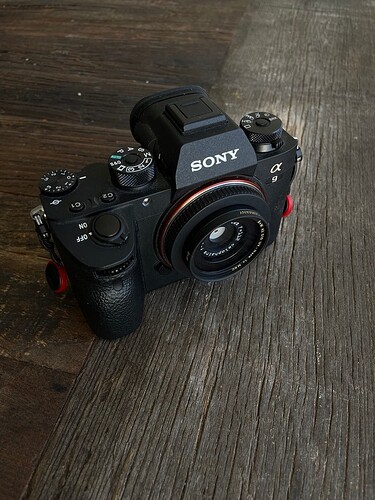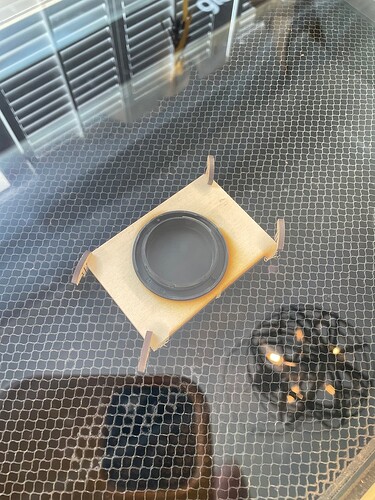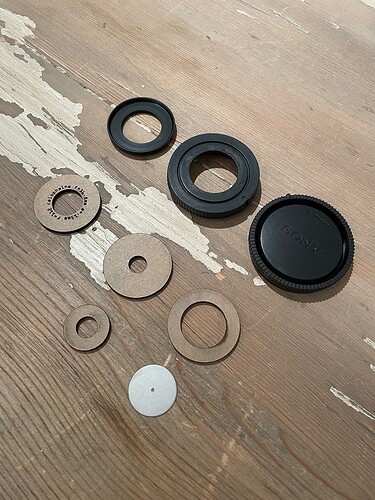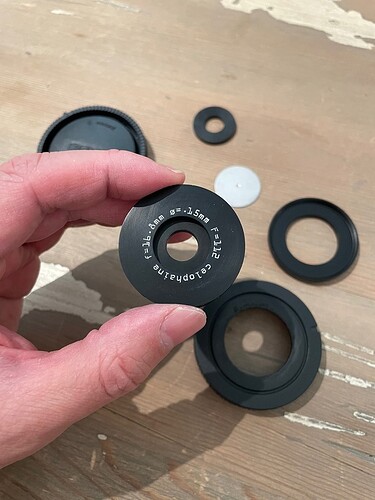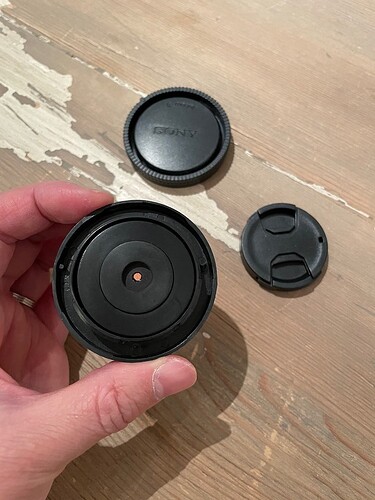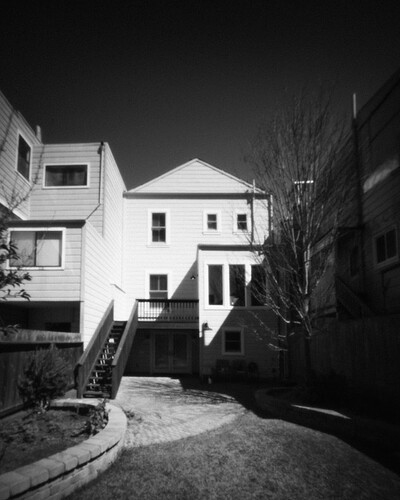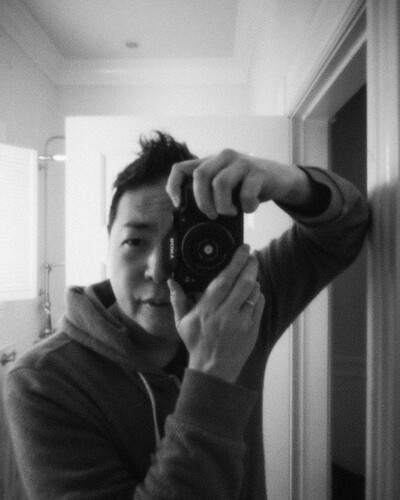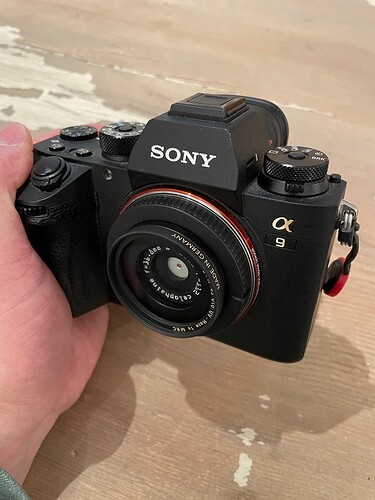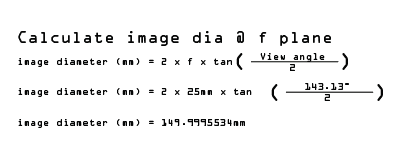I suppose it is tradition for me to post two write-ups on Worldwide Pinhole Photography Day (the last Sunday of April) so here is my build for a body cap pinhole for my Sony A9 (it can be any Sony E-mount camera).
For those of you who aren’t photo enthusiasts or don’t have interchangeable lens cameras, a body cap is just like a lens cap, only it is for the camera body. It covers the internals of the camera when the lens is not attached. In the digital age, the sensors must be kept clean and dust-free. A particle of dust that finds its way onto your sensor means you will have to remove it on post. And there is never just one dust particle!
A pinhole body cap is a pinhole that is mounted to a hole made in the body cap and “voila,” your digital camera is now a pinhole camera. This is quite handy since modern mirrorless cameras can have crazy high ISOs, which means you can get normal shutter speeds instead of the long exposures of traditional pinhole photographs. Of course, you don’t really want to do that, since the blur of long exposures is part of the appeal of pinhole photography, but a 1/2 to 1 second exposure can give you nice effect.
Pinhole body caps are commercially available and for pretty cheap. They are usually a third-party knock off body cap that’s had a hole drilled in it and a pinhole mounted behind it. Simple and it works. The big problem is that you now have a hole, albeit a small one, exposing your nice sensor to dust and the elements. Not ideal. Read above.
Wouldn’t it be nice if you could mount a lens filter ring in front of the body cap and fit a UV or haze filter on it to protect the insides? Sure, I do that with all my pinhole cameras!
So I got some knock-off body caps and did some cutting tests.
Pew! There’s a reason why we use cast acrylic in Glowforge-land. The ABS plastic (at least that’s what I think it was) of the body caps just made an awful stink. I’m sure I’m going to get cancer from it.
The design was straight forward. I wanted to get the pinhole at the optimal distance from the sensor relative its diameter.
The flange distance (the distance from the lens flange on the lens mount to the sensor plane) on my camera is 18mm. The focal distance I wanted was 16.8mm. So all I needed was to stack some rings to move the pinhole position 1.2mm from the flange.
I used regular cast acrylic for the parts.
Class photo of the parts before assembly.
The acrylic was black but quite shinny so I sanded them all with very fine sandpaper to achieve an even matte finish. I kinda like the look. It’s almost like stone.
The front element with data engraved and filled in with white paint.
I used my regular step up ring as the filter mount and the rest was gluing it all together. The pinhole is not removable like my other cameras. This is because I did not want to use magnets near the sensor. Probably a bad idea. I did not want to use screws either since I was just not sure how strong the build would be and did not want jagged metal parts rolling around the sensor either.
The back of the body cap. The pinhole mount is fixed permanently with a retaining ring.
At any rate, it’s a cheap enough and fast enough build that I won’t be too bummed if I have to replace the pinhole for some reason.
The nice thing about digital is you get instant results. I don’t mean in the field. I mean at the end of the day. Looking at the display after each shot is exactly the kind of habit I wanted to wean myself from. But look at these results comparing the digital and the film.
The back of my house with the digital pinhole.
The same shot with my 4x5 pinhole camera in 2021.
It’s not entirely a fair comparison since they are different formats and the resolutions are different. If anything the film version, because it uses a 4x5 inch negative is sharper and has more contrast. But both are unmistakably pinholes. For street shots I think this is potentially a great option.
Shooting a digital pinhole is straight forward but different from the film method. The aperture is fixed. In this case, it turned out to be F112. The shutter speed is the critical part. Do you want to freeze action like a normal picture or do you want the intentional blurring of movement? I want the later, so I set my camera to 1 second. It can be longer but you really need a tripod after that. 1 second is enough to let things blur yet hold steady so that you have some objects not blurred as a point of reference. My camera has in body stabilization so sometimes I need to give the camera a bit of a nudge otherwise it is too static! The final step is to set the ISO to auto. Unless you are shooting in the night or a dark interior, you’ll never get above ISO12800 and for my sensor, that is a perfectly acceptable noise level. When shooting, if the shutter speed is 1 second or slower, I noticed that the “live view” is not able to give you an accurate preview. Don’t worry about it. Pretend it doesn’t exist and just compose the shot.
A quick self-portrait in the bathroom with a 1 second exposure time.
In practice I am able to shoot with the wild abandon I do not have with film. But I realized I have fewer keepers. With film I have to think more about it and I get better results. With digital there is the temptation to rapid fire a bunch of shots so I need to remind myself the approach is the same as film. So when I got my head back in the right zone I was able to take pictures like these:
An ominous bouncy house in the park.
Wild children devouring the carcass of a piñata.
An angle of my house that would have been less intuitive to take with my 4x5 camera.
A swirl of light from intentional camera movement.
Anyway, I like the results and I think I will use this body cap pinhole as the body cap for my camera from now on.
With the UV filter mounted it looks like a real lens.
Why not? This way, even without a lens, my camera will always be able to take pictures! Cheers!
